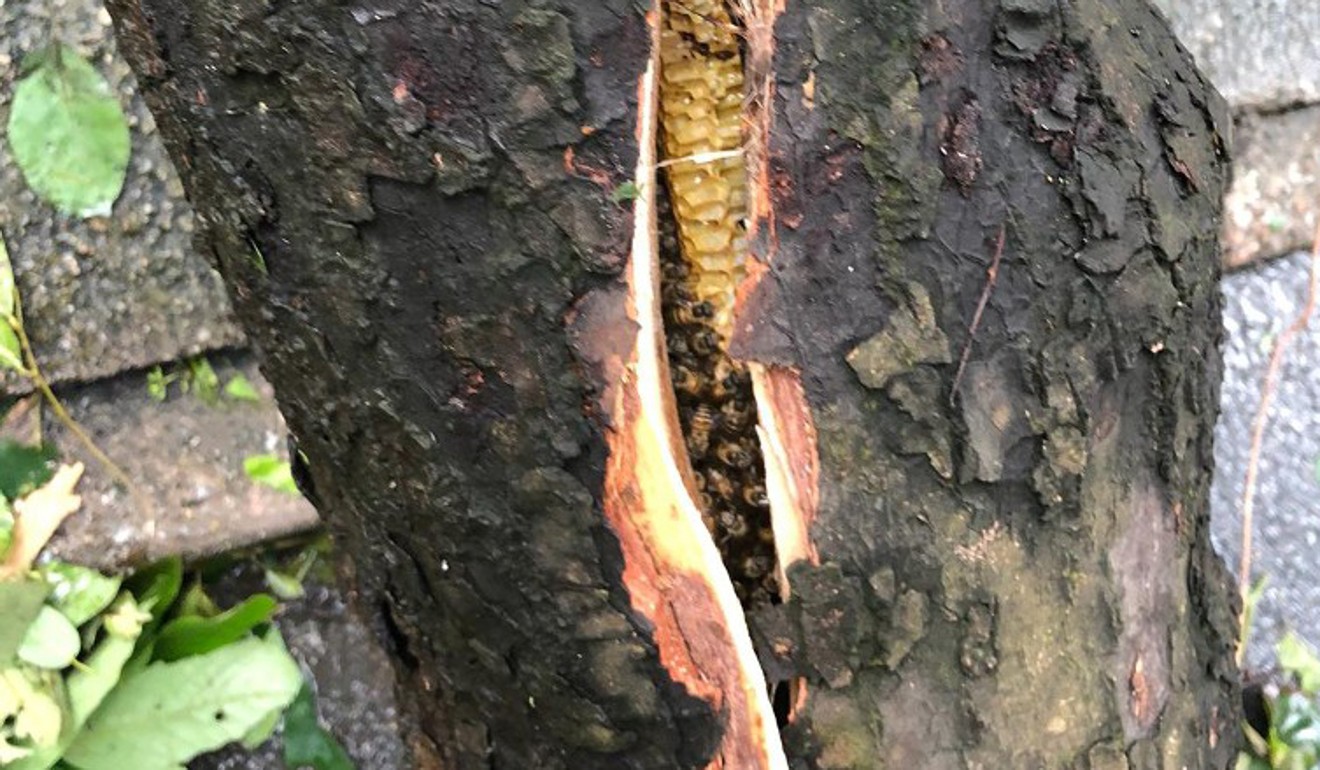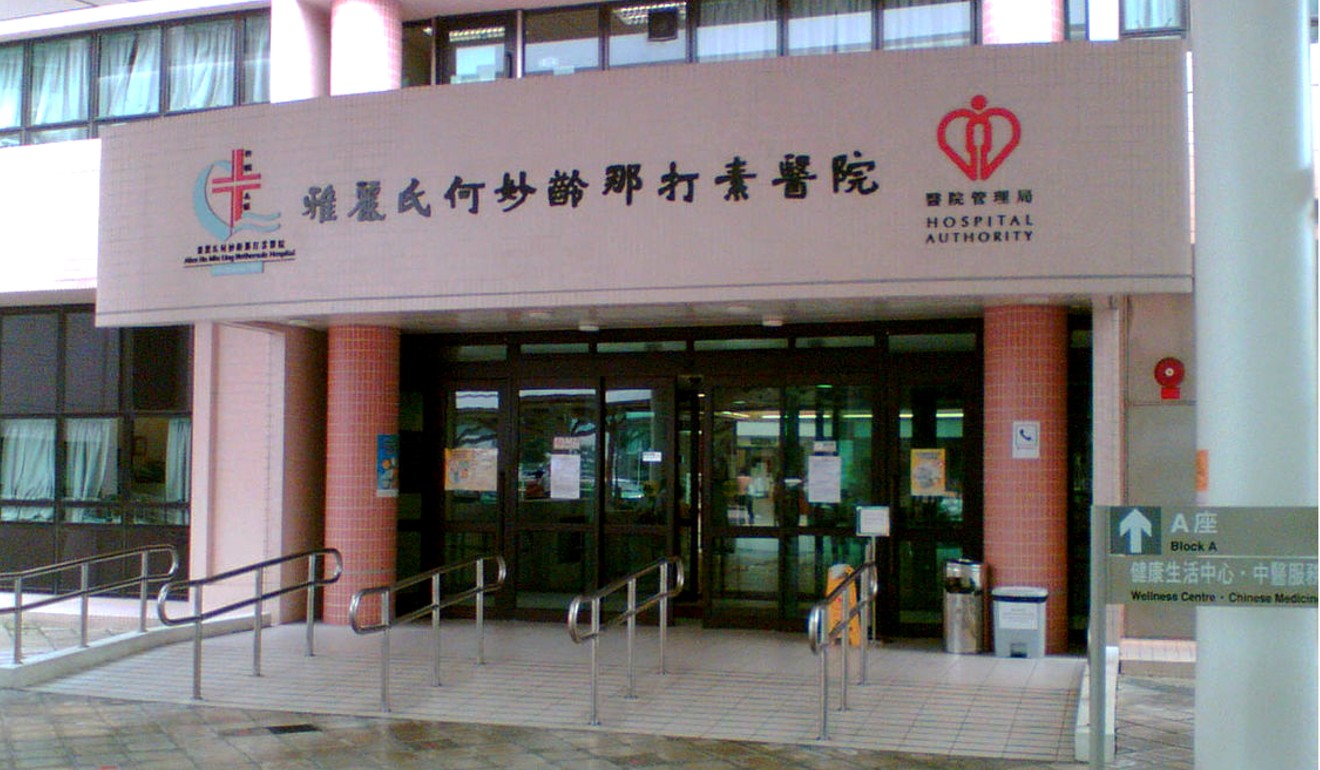
Hongkongers seek help for stings as bees ‘go crazy’ after Typhoon Mangkhut
Most cases reported in Tai Po, with at least 20 patients visiting emergency unit
Scores of Hongkongers have been stung by bees over the past two days after Typhoon Mangkhut lashed the city on Sunday, leaving countless toppled trees and destroyed insect nests in its wake.
Many victims complained online about bee stings, with most of the cases reported in Tai Po, where some residents said they saw the insects attacking people in the streets. Sightings were reported at Kwong Fuk Road, a main road in the area.
A photo circulated online showed a large number of bees in a crack on a tree trunk.
In WhatsApp messages on Monday, one user said a friend who worked as a nurse reported that there had been many cases of wasp stings at the hospital’s emergency department. The user urged parents not to let their children go out, adding that “the bees are crazy after the storm”.

Another user on the same platform said their colleague had gone to hospital for a bee sting and learned from a nurse that the case was the 10th that day.
Discovery Bay Marina Club denied us shelter in typhoon, boat owners say
Dr Eddie Yuen Cheuk-pun, a consultant at Alice Ho Miu Ling Nethersole Hospital in Tai Po, confirmed on Tuesday that from midnight on Monday to 1pm on Tuesday, 20 people aged 22 to 76 had sought help at the emergency unit for bee stings.
Yuen said: “It was extraordinary this time to have so many cases in a short period … I would suggest that people see a doctor because they won’t know whether they are suffering from mild, moderate or severe allergic reactions.”

He speculated that the cases might be related to the storm, which had destroyed beehives in trees.
Most victims suffered moderate allergic reactions, and all were discharged from hospital after treatment.
Medical sector lawmaker Dr Pierre Chan Pui-yin said he had heard of bee sting incidents in urban areas such as Jordan, which were rare.
He suggested victims seek medical help if they had severe reactions, such as breathing difficulties.
Typhoon Mangkhut, ‘global weirding’ and why you shouldn’t go on holiday, ever
Hong Kong Entomological Society vice-chairman Yiu Vor said the insects would try to protect their hives.
“If there is anything attacking their hives, the bees’ natural instinct would prompt them to look for who caused the damage,” he said. “If a person just walks past a damaged beehive, it is possible those bees would see him or her as an attacker.”
Yiu said that when a bee stings someone, it releases a chemical substance that calls other bees to join the attack.
He noted there were usually more bees in a hive in September, as the insects generally started building their nests in early summer.
“The later it is in the year, the bigger the hive, meaning more bees there and a higher chance for people to encounter those bees,” Yiu said, adding that a bigger hive would also be easier to damage. He said bees would leave their hive around November and build a new one the next year.
Yiu advised members of the public not to stand near a damaged beehive. Workers removing fallen trees should check whether there was any bee activity in the tree before moving it. If bees were spotted, workers should let people specialising in bee nest removal handle the work before continuing.
Veteran pest controller Gary Yam Wing-keung said more rats and cockroaches were likely to appear after the storm.
He said those more likely to be spotted were species usually found in sewers, such as the brown rat and American cockroach.
“When there is a sudden surge of water in those sewers, they have to escape from that water, so they move upwards,” Yam said.


